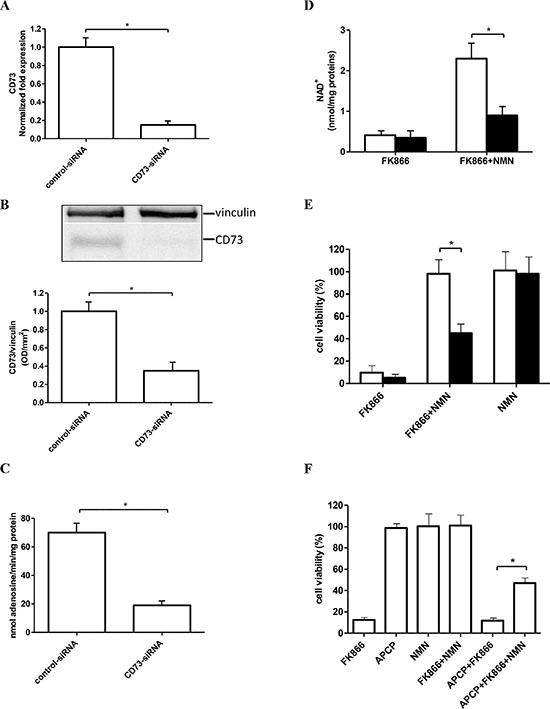Figure 2. Silencing of CD73 expression or pharmacological CD73 inhibition impairs the NMN-mediated rescue from FK866-induced cell death.

(A–E) OVCAR-3 cells were transfected in the presence of a specific CD73-siRNA or negative control-siRNA (control-siRNA). Twenty four hours after transfection: qPCR analysis (A), Western blot analysis (B), and evaluation of the AMP-degrading activity (C) were performed; (D–E) After 24 h after electroporation, cells transfected with control-siRNA (white bars), or with CD73-siRNA (black bars), were treated (or not) with 30 nM FK866, in the presence or absence of NMN (added twice/day at 10 μM final concentration) and NAD+ content (D) and cell viability (E) were evaluated after 48 and 72 h, respectively. Cell viability is expressed as % of untreated cells. Data are mean ± SD (n = 3). In panel B, one representative blot and the mean ± SD of 3 different analysis are shown *p < 0.05. (F). OVCAR-3 cell viability (5 × 103 well in 96-well plates) was evaluated after 72 h incubation of the cells in complete medium with or without 30 nM FK866, in the presence or absence of 1 μM adenosine 5′-(α, β-methylene)diphosphate (APCP), or of 10 μM NMN (added twice a day). Results are expressed as percentage of cell growth relative to untreated, control cells. Data are expressed as mean ± SD (n = 3). *p < 0.05, compared to FK866+ NMN-treated cells.
